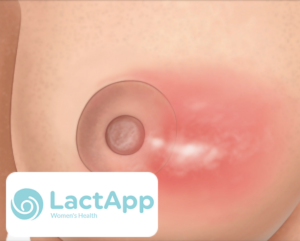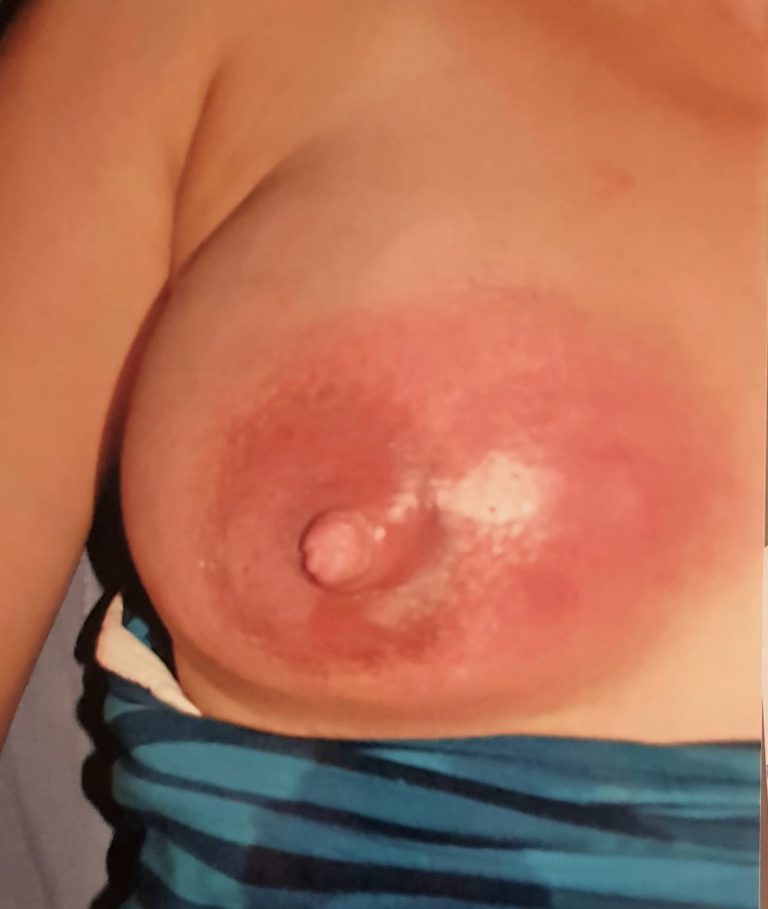
Stages of a breast abscess
A breast abscess is the most serious complication a mother can experience during lactation. An abscess is usually produced by a poor resolution of mastitis, which is why it is very important to effectively treat mastitis or any sign of infection in the breast.
A breast abscess develops over time, so sometimes, it is difficult to determine whether the lump a mother notices in her breast is an abscess or not. In this article, we have divided the possible evolution of an abscess into four distinct phases and explain which elements characterize each stage and how to proceed:

Phase 1
What you notice:
- A lump of smaller or larger size appears in an area (it can be any) of the breast
- It is consistent to touch
- The lump does not change before or after a feed at the breast
- Pain is mild to moderate
- No fever
- There is no change in the skin of the breast.
What to do:
- Continue with breastfeeding and draining your breast
- Observe if the lump changes in size, which may indicate that it is not an abscess
- Apply cold to help reduce inflammation
- Check if you have a fever or raised temperature
Phase 2
What you notice:
- The lump remains unchanged for 3 days (72 hours later)
- It begins to feel softer to the touch
- Fever or high temperature may develop
- The lump begins to be painful or even extremely painful
- The lump is visible to the eye, and the skin of the breast may appear shiny and purple or red in color
What to do:
- If you get a fever or high temperature, immediately seek the assistance of your doctor or healthcare professional for treatment with antibiotics*
- Apply moist heat to help the lump mature
* This is very important because the development of a breast abscess can be long and if antibiotics are not administered in time, there is a risk of generalized infection.
Phase 3
What you notice:
- The lump is still there
- The lump fluctuates to the touch (it moves)
- The swelling and lump are visible
- There is no pain
- The skin appears bruised and very red
- And especially very shiny
- It may look like the skin is about to break, like old tissue tearing
What to do:
- It’s important to continue with antibiotics
- At this point, your doctor will remove and drain the accumulated pus fluid.
- There are two possible procedures: needle aspiration or incision (cutting) in the area.
- If the chosen procedure is an incision, your doctor should try to make the incision away from the nipple, which will make it easier to continue breastfeeding
Phase 4
What you notice:
- If the abscess has been removed by needle aspiration, recovery is immediate, and breastfeeding is very easy. The lump has disappeared, but the enclosed area can be felt to the touch.
- If the abscess has been removed by incision, the wound is visible, and a drainage tube will have been placed inside the wound, preventing the wound from closing immediately. When breastfeeding, it is possible that breast milk may come out of the incision area. Apply dressing or gauze to prevent leakage. Gradually, the wound will heal and close permanently.
What to do:
- Continue taking antibiotics according to your doctor’s instructions.
- Once you finish the treatment, it is advisable to supplement your diet for two weeks with probiotics.
- It is very important to continue to breastfeed. If you do not want to continue, you can stop but wait until you have finished resolving the breast abscess.
- If the incision area is close to the areola, look for new breastfeeding positions that allow the baby to latch on.
- If the baby cannot latch on, you should try to express milk by hand or with a breast pump.
- Remember that medication to stop lactation is not effective in this case.